Some questions about DBA
1. What is the single biggest problem faced by organizations using relational databases?
The single biggest problem faced by organizations using relational databases is scalability. Relational databases are designed to handle structured data, but as the amount of data grows, it can become challenging to maintain performance and scalability. In particular, as the number of concurrent users and the complexity of queries increase, relational databases can struggle to keep up with demand. Additionally, scaling a relational database can be a complex and expensive process, requiring specialized hardware and software, and often involves downtime for maintenance and upgrades. This has led to the development of alternative database technologies, such as NoSQL and NewSQL databases, which are designed to address these scalability challenges.
2. What is the difference between a data administrator and a database administrator?
A data administrator (DA) and a database administrator (DBA) are two distinct roles in an organization's data management structure:
- A data administrator (DA) is responsible for managing the organization's overall data strategy and policies, including data security, privacy, quality, and compliance. DAs typically work with business users to understand their data needs and define data standards, and they may also oversee the design and development of data architectures and models.
- A database administrator (DBA), on the other hand, is responsible for managing the organization's database systems, including installation, configuration, monitoring, and maintenance. DBAs ensure the integrity, availability, and performance of the databases, and they may also handle tasks such as data backup and recovery, user management, and security.
In summary, while both roles are essential for effective data management, the DA focuses on the strategic aspects of data management, while the DBA is responsible for the technical aspects of database management.
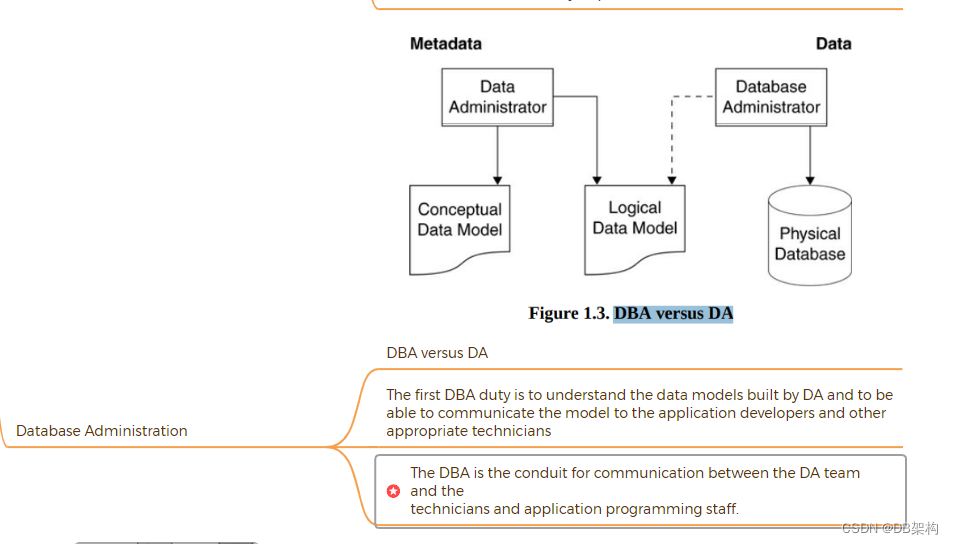
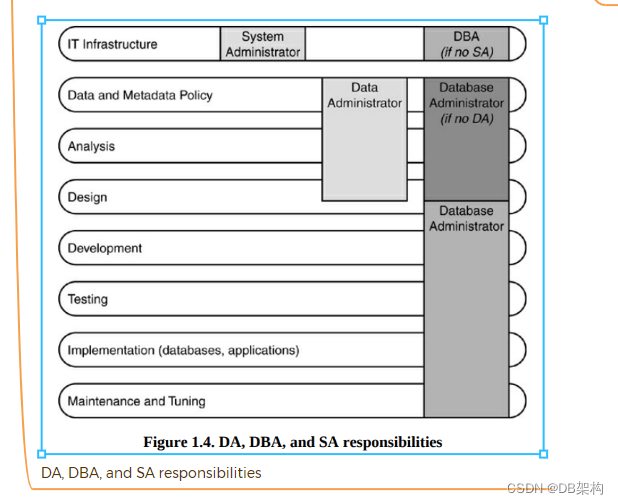
3. What factors determine the number of DBAs required to properly support an organization’s database environment?
The number of database administrators (DBAs) required to properly support an organization's database environment depends on several factors, including:
Size and complexity of the database environment: The more complex and larger the database environment, the more DBAs are required to manage and maintain it.
Number of databases: The number of databases that an organization has will also impact the number of DBAs required. More databases will require more DBAs to support them.
Criticality of the data: If the data is critical and needs to be available 24/7, more DBAs may be needed to ensure that the databases are properly maintained and available.
Workload: The amount of work that needs to be done to support the database environment will also impact the number of DBAs required. A high workload will require more DBAs to manage it.
Budget: The budget available for hiring and maintaining DBAs will also play a role in determining the number of DBAs required. A larger budget may allow for more DBAs to be hired to support the database environment.
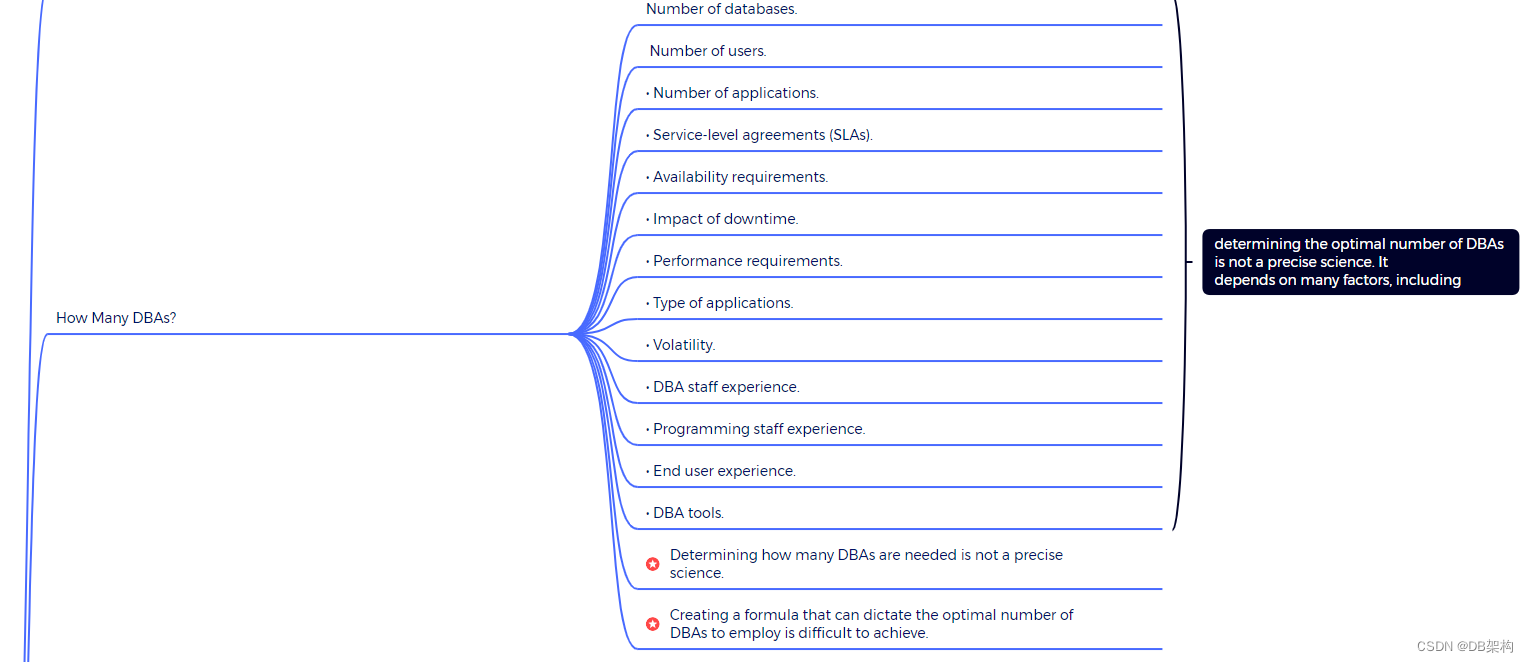
4. How does new technology impact the job of the DBA?
New technology can have a significant impact on the job of the DBA in several ways:
Automation: New technologies, such as cloud-based platforms and automation tools, can automate many of the routine tasks performed by DBAs, such as backups, monitoring, and maintenance tasks. This can free up DBAs to focus on more complex tasks and strategic initiatives.
Skills: New technologies often require new skills and knowledge, which can impact the training and development of DBAs. DBAs need to stay up-to-date with the latest technologies and trends to remain effective and relevant in their roles.
Scalability: New technologies can enable databases to scale rapidly and handle larger volumes of data. DBAs need to ensure that the database environment can scale effectively to support business growth and changing requirements.
Security: New technologies can introduce new security challenges, such as increased risks of cyber attacks or data breaches. DBAs need to ensure that the database environment is secure and protected against these threats.
Overall, the impact of new technology on the job of the DBA is significant, requiring ongoing training and development to keep up with the changing landscape and demands of the business.
5. What is the difference between a database architect and a system administrator?
A database architect is primarily responsible for designing the database schema, data models, and data management strategies for an organization. They work closely with stakeholders, including business analysts and application developers, to understand the business requirements and design an efficient and effective database solution that meets those requirements. They also ensure that the database design is scalable, secure, and optimized for performance.
On the other hand, a system administrator is responsible for managing the overall IT infrastructure of an organization, which includes hardware, software, networks, and servers. They ensure that the systems are running efficiently, effectively, and securely. System administrators may work with database administrators to ensure that the database systems are running properly, but they do not typically have the specialized knowledge and expertise in database design and management that a database architect possesses.
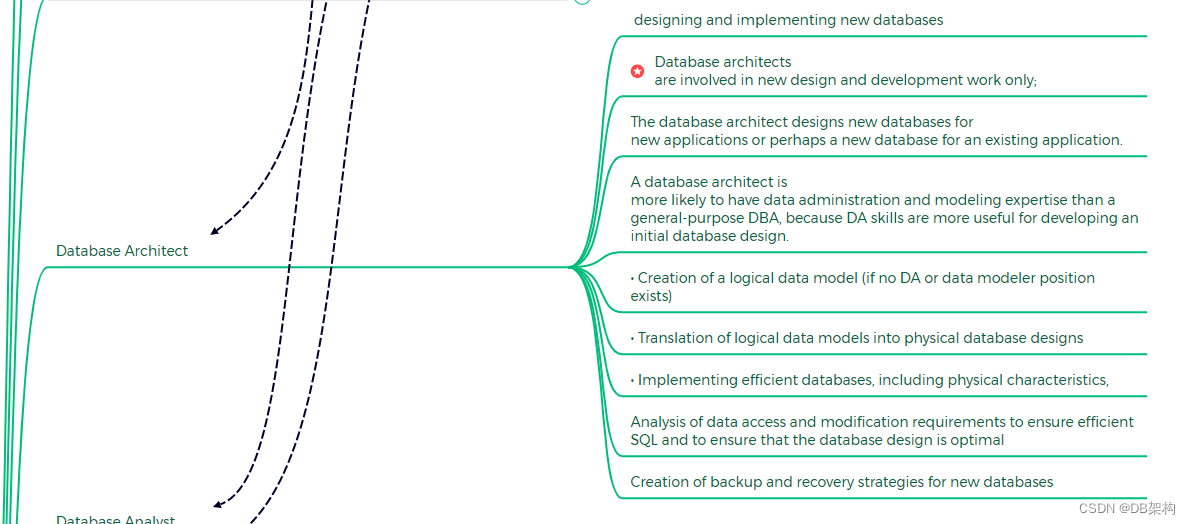

6.What job function is most likely to be responsible for installing a new DBMS release?
The job function that is most likely to be responsible for installing a new DBMS release is the Database Administrator (DBA). DBAs are responsible for managing the organization's database environment, including installing, configuring, and maintaining the DBMS software. As part of this responsibility, they are often the ones who install new releases of the DBMS software.
The system administrator ensures that the IT infrastructure is operational for database development by setting up the DBMS appropriately, applying ongoing maintenance from the DBMS vendor, and coordinating migration to new DBMS releases and versions.
7.What are the three types of integrity that DBAs must understand?
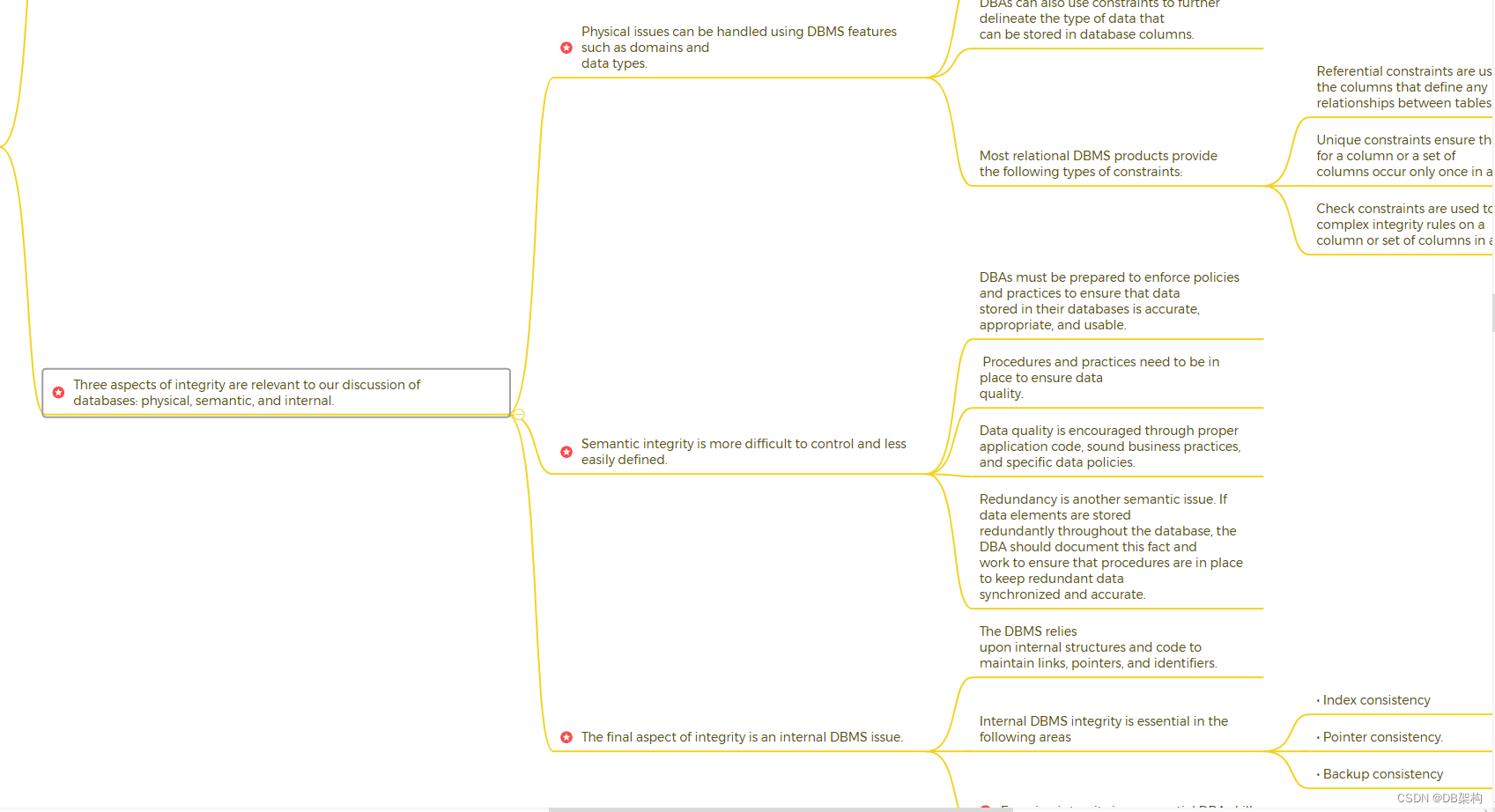
8.Is a certified DBA necessarily a qualified DBA? Why or why not?
Not necessarily. While certification indicates that an individual has passed a certain level of testing or met specific requirements, it does not necessarily guarantee that they have the necessary knowledge and skills to perform the duties of a qualified DBA. Certification is only one aspect of evaluating the qualifications of a DBA, and employers should also consider an individual's education, experience, and demonstrated ability to effectively manage and maintain databases.
9.Why must the DBA be prepared to function as a jack-of-all-trades?
The DBA (Database Administrator) is responsible for ensuring the proper functioning, security, and maintenance of the database system. This involves a wide range of tasks, including database design, installation and configuration, performance tuning, backup and recovery, security management, user management, data migration, and more.
As a result, the DBA must be able to function as a jack-of-all-trades because they need to have a broad and deep understanding of various aspects of the database system, as well as the ability to work with different technologies, tools, and platforms. They need to be proficient in multiple programming languages, operating systems, network technologies, and database management systems, among other things.
In addition, the DBA must also have strong communication and collaboration skills to work effectively with other stakeholders in the organization, such as developers, analysts, managers, and end-users. The DBA must be able to translate business requirements into technical specifications and vice versa, and work closely with other teams to ensure that the database system meets the needs of the organization as a whole.
Therefore, the DBA needs to be a versatile and adaptable professional who is able to wear many hats and take on a wide range of responsibilities to ensure that the database system is running smoothly and delivering value to the organization.

10. At a high level, discuss the primary job responsibilities of a DBA.
At a high level, the primary job responsibilities of a DBA (Database Administrator) include:
Installing and configuring database software: DBAs are responsible for installing and configuring database software, ensuring that it is properly configured to meet the needs of the organization.
Designing and maintaining databases: DBAs are responsible for designing and maintaining databases, ensuring that they are organized in a way that makes sense and that they can be easily accessed by users.
Ensuring database security: DBAs are responsible for ensuring that databases are secure and that only authorized users have access to them.
Managing database backups and recovery: DBAs are responsible for managing database backups and ensuring that databases can be restored in the event of a disaster or other problem.
Monitoring database performance: DBAs are responsible for monitoring database performance, identifying and resolving issues that impact performance.
Ensuring data integrity: DBAs are responsible for ensuring that the data in the database is accurate and consistent.
Managing database users and access: DBAs are responsible for managing database users and ensuring that they have the appropriate level of access to the database.
Planning for future growth: DBAs are responsible for planning for future growth, ensuring that the database can handle an increasing amount of data and users.
Overall, the DBA is responsible for ensuring that the database is running smoothly and that it meets the needs of the organization. This requires a deep understanding of database technology, as well as strong problem-solving and communication skills.
相关文章
- oracle 查看dba账户,Oracle DBA常用查询「建议收藏」
- Oracle 视图 DBA_ACTIVITY_TABLE 官方解释,作用,如何使用详细说明
- Oracle 视图 DBA_ATTRIBUTE_DIM_KEYS_AE 官方解释,作用,如何使用详细说明
- Oracle 视图 DBA_FILE_GROUP_EXPORT_INFO 官方解释,作用,如何使用详细说明
- Oracle 视图 DBA_XTERNAL_LOC_SUBPARTITIONS 官方解释,作用,如何使用详细说明
- Oracle 视图 DBA_LOGSTDBY_NOT_UNIQUE 官方解释,作用,如何使用详细说明
- Oracle 视图 DBA_REFRESH 官方解释,作用,如何使用详细说明
- Oracle给DBA授予权力的奇迹(oracle赋予dba权限)
- 认识Oracle:从DBA登录到增强管理(dba登录oracle)
- 管理Oracle数据库的DBA权力(oracle的dba权限)
- Oracle数据库管理员的职责与技能介绍(oracle dba工作)
- DBA面试Oracle技能如何考验(dba面试题oracle)
- DBA与Oracle两者的不同之处(dba和oracle区别)
- 招聘Oracle DBA精英引领未来(dba oracle招聘)
- 在Oracle中管理DBA连接权限(oracle中连接dba)
- 分配Oracle DBA权限,迈向新一阶段(oracle付dba权限)
- Oracle DBA困难究竟有多大(oracle dba难吗)
- 精通Oracle DBA 连接技巧(oracle dba连接)
- Oracle DBA在西安的一段经历(oracle dba西安)
- Oracle DBA笔试踏入职场的必经之路(oracle dba笔试)
- Oracle DBA 该去何处(oracle dba消失)
- Oracle DBA把IT未来锁定在你的手里(oracle dba 吧)
- 检查Oracle DBA的上机检查之旅(oracle dba上机)
- 追求完美ORACLE DBA的不懈努力(oracle dba c)
- Oracle9iOGG 组合最强的DBA工具集(oracle9i ogg)

